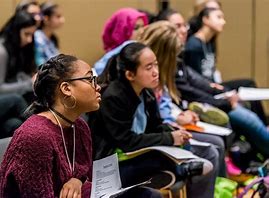By Lesley Symons, INSEAD
•
September 26, 2016
Writing Women into Business School Case Studies The Starting Point The push for more women in business and in leadership positions is ever present. Business schools play a vital role in achieving gender diversity in leadership and on boards. However, if you take a walk around most business school campuses, what you will see is a majority male student cohort, few female students, few female professors and few women protagonists in the MBA/EMBA course material. This bothered me⎯a lot. Idea in Brief The main teaching tool at business schools is the case method approach, lauded as a way of enabling students to learn to lead and connect theory with real-life experiences. For this study, 74 award-winning and bestselling case studies from 2009-2015 were analyzed on how they represent women. Findings show that: There is a systemic lack of female lead protagonists and an overall absence of women in case studies. Case studies portray a “male” model of leadership and perpetrate second-generation gender bias. The lack of women in case studies, as professors or on boards, together with a largely male student cohort at business schools, reinforce the status quo and undermine female managers’ ability to establish their own leadership identity. Idea in Practice Business schools should play a vital role in promoting gender equality in organizational leadership and on executive boards. Although they profess to promote gender balance in organizations, in some ways business schools 68 preserve the status quo. The reality is in the numbers: female professors are few, case protagonists are overwhelmingly men, and in the student body men are almost always in a strong majority. This suggests that stereotypical “male” leadership qualities are reinforced by business schools. The implicit message – for both female and male MBA students – is that to succeed they must conform to the masculine “norm.” For women MBA students, who obviously have much to contribute as future executives, not only are they in the minority, but they are virtually invisible in most of the teaching materials and models of leadership presented. Clearly, business schools need to analyze and understand the explicit and implicit gender messages that all parts of the organization and its programs convey, and what role they play in maintaining the status quo. Current MBA case studies, by their very nature, impede debate about the roles of both women and men in organizations—one would think these are important issues for business schools. Introduction Business schools around the world use the case method approach as a tool for learning on MBA and executive education programs. The case method is heralded as a way of enabling students to learn to lead and to connect theory and practice through discussing real-life leadership and organization challenges.1 In this study, I analyzed award-winning case papers written or published from 2009 to 2015 from the Case Centre. I was curious to see how many times a women occupied the role of lead protagonist, and how often women were mentioned across all case studies. My findings are disturbing. In the overwhelming majority of case studies, the “think manager – think male” scenario prevails: most cases have a male lead—and a white Western one at that.2 When women are present in case papers, they are often cast in secondary roles. However, I am pleased to report that my theme is garnering attention. On August 5th 2015, the White House convened the Business Community on Expanding Opportunities for Women in Business. In conjunction with this event, 45 business schools committed to a best practice document3 that gives concrete examples of ways to help women succeed in these schools. Among other recommendations, the document mentions that case studies need to be more representative of today’s workplace, “showing women in significant line management roles and/or as the main protagonist.” Leadership identity development in business schools Leadership development is promoted as one of the key reasons for attending business school programs. Indeed business schools are uniquely placed to challenge individuals on the way they work, and to model leadership styles in a way that challenges stereotypes. The MBA context - taking time away from the familiar environment and normal constraints of life - offers the possibility to practice and experiment with new ways of “doing” and “being” as a leader. As such, business schools are becoming “identity workspaces” where people reflect on their career development or professional transition. In theory, this is an ideal setting in which to address leadership stereotypes. Indeed MBA program designers are becoming more vocal, and more careful, about diversity. And yet very few people - students, faculty, or administrators - have ever questioned the lack of women in the most entrenched and formalized pedagogical tool of the business school classroom: the case study. METHOD The study analyzed 74 award-winning and best-selling studies published over a period of seven years by the Case Centre (CC). Written by faculty and research assistants, the case studies are by far the most widely taught cases in business schools around the world. My research focused on how these award-winning case studies represent women. Attention was given to the gender of the lead protagonist as well as how women were described, and the roles they played. A thematic analysis approach was used to identify overt and covert messages about women leaders, as well as reoccurring themes across the cases. Incidentally, I encountered some resistance as I explained the research. The topic was met by apathy—in the form of comments such as, “Yes, we are aware that there are not many women in case studies,” followed by explanations why that was so, and why nothing could, or should, be done about it. When I interviewed students, many of them, particularly male students, were antagonistic. My graduation speech on the topic was received neutrally ⎯ to put it mildly ⎯ by the associate dean. It was if I had uncovered something like an unpleasant smell that people preferred to live with rather than deal with. Key Findings and Discussion A deeper analysis of the 74 cases revealed three common themes: (1) Few women in case studies, (2) Think manager/think male leadership attributes, and (3) ‘Pink’ (traditionally associated with women) areas of work. There are few women in case studies Among the 74 case studies, women were absent from 33 (45%). Women featured as protagonists in only eight case studies. Even more startling: two of those eight female protagonists turned out to be men in real life. (One case author who felt there weren’t enough cases featuring women, had intentionally changed the name/sex of the protagonist). Taking this into consideration, only METHOD The study analyzed 74 award-winning and best-selling studies published over a period of seven years by the Case Centre (CC). Written by faculty and research assistants, the case studies are by far the most widely taught cases in business schools around the world. My research focused on how these award-winning case studies represent women. Attention was given to the gender of the lead protagonist as well as how women were described, and the roles they played. A thematic analysis approach was used to identify overt and covert messages about women leaders, as well as reoccurring themes across the cases. Incidentally, I encountered some resistance as I explained the research. The topic was met by apathy—in the form of comments such as, “Yes, we are aware that there are not many women in case studies,” followed by explanations why that was so, and why nothing could, or should, be done about it. When I interviewed students, many of them, particularly male students, were antagonistic. My graduation speech on the topic was received neutrally ⎯ to put it mildly ⎯ by the associate dean. It was if I had uncovered something like an unpleasant smell that people preferred to live with rather than deal with. six of the 74 award-winning and best-selling cases describe the leadership of a female protagonist—about 8%. Present in cases There is clearly a systemic lack of female lead protagonists and an overall absence of women in case studies, confirming how primary teaching materials that are in widespread use in business schools are maintaining the gender bias status quo. Neither MBA students nor business school faculty write women into leadership—literally. Influenced by the famous Bechdel Test that looks at the presence of female leads in movies, I subjected the cases to the “Symons Test” to determine the active presence of women in each paper: each study must include (1) at least one woman, (2) in a leadership position (the protagonist), (3) who talks to another woman about the business. Of the 74 papers, 16 passed the first measure and ten papers passed the first and second. Only three case studies (4%) met all three criteria—and in two of these, the women protagonists were originally men. The overwhelming majority, 45 cases (61%), did not meet any of the Symons Test measurements, providing incontrovertible evidence of the invisibility of women in business case studies. Men’s dominant presence in papers reinforce the “think manager – think male” model The majority of case studies feature more than one man. There are few women in cases that have a male protagonist. Leadership descriptions in all case studies substantiate the “think manager – think male” standpoint, for example “He liked fast motorbikes and thrash metal” and “A tough but fair manager—he was results-driven, disciplined, and demanded complete accountability from his team.” Other men were described as strong-willed and courageous. Moreover, in four of the eight cases with a female protagonist, the supporting cast of male characters was given more space than the women leader. In five of the eight cases the female protagonist’s qualities were not described, although the case went on to describe the male leaders. In cases with male protagonists, qualities and characteristics were described. Second-generation gender bias was apparent in the cases. The papers implicitly indicated that even when present, women were somehow “less”. What are the implications for the business school context? With so few female protagonists and women featured in case studies, added to a scarcity of female professors, predominantly male student cohorts and a “think management – think male” paradigm, there are a number of messages that all students, male and female, are subject to. Because the business school climate and culture is predominantly male, gender stereotypes are reinforced for women students (who are in a small minority). As women are “invisible” or missing from this context, female management students may unconsciously feel that they don’t they belong: This is not the right place for me (as a woman). Another implicit message they may be getting is the need to assume stereotypical male leadership qualities in order to become “invisible” by conforming to the “norm”. Within the program and the business school environment, the way leaders are portrayed in business cases continues to encourage female management students to take on “male stereotypes of leadership”. Being in the minority at business schools, women (including faculty) also become highly “visible” and are more vulnerable to criticism. This undermines female students’ motivation to experiment with leadership roles during their MBA experience and thus adds to their role identity conflict, the implication being that business schools and MBA courses may not provide “safe identity workspaces” for women. These findings do not point an accusatory finger at men; indeed they suggest that men too are prisoners of a system that is detrimental to both genders. Messages that reinforce ideal or desirable “male” role models and leadership qualities undermine the ability of both men and women to accord leadership status to women. They also hamper men who display so-called “feminine” leadership behaviors. In addition, by reinforcing a norm, these messages dampen debate and critical challenges about the way business schools (individuals, professional bodies and organizations) theorize about and teach leadership. Women are associated with ‘pink’ areas of work in case studies ‘Pink’ topics are those that are traditionally associated with women, such as: what was once known as “the four Fs”: food, family (relationships, children, sex), furniture (home), fashion female-focused subject matter, such as women’s health or culture I found that women were predominantly present in pink topics in the case studies analyzed. In six of the eight cases that had a female protagonist, the industries could be clearly categorized as pink (family and/or woman-specific, fashion and/or woman-specific, food and furniture), whereas in case studies with a male protagonist the main topics were technology (internet, mobile and IT initiatives, etc.) 29%; food 20%; motor industry and transport 15%; family (health, retail and entertainment) 15%. Including a female protagonist in cases featuring companies within pink categories reflects an unconscious bias that these are the areas in which women are “normally” found and that they are not present in other areas of business. Practical Implications The environment for women at business schools is predominantly masculine. By overlooking issues of gender and leadership in case studies, business schools enact gender biases and continue to maintain women’s invisibility, and thus perpetuate the status quo. This also reduces the critical and challenging debates that are so important to the learning environment and omits consideration of the value of both women’s and men’s leadership styles. Business schools need to oversee the entire case collections used in their business programs and the gender messages they transmit⎯both via their courses and as institutions. If their genuine intention is to help women shatter the glass ceiling and build awareness of gender issues, there is still much to do. From top leadership down, business schools need to understand the explicit and implicit messages about gender and leadership that all parts of the organization send out to students, and what role the institution plays in maintaining the status quo. The representation of women in senior positions is critical for the development of a woman’s leadership identity. At business schools it includes role models among faculty and other senior positions, as well as increased student numbers. Without role models and other women in business, female management students may be affected at an early stage of their career by an unconscious bias that they “do not belong here.” Access the full publication here











